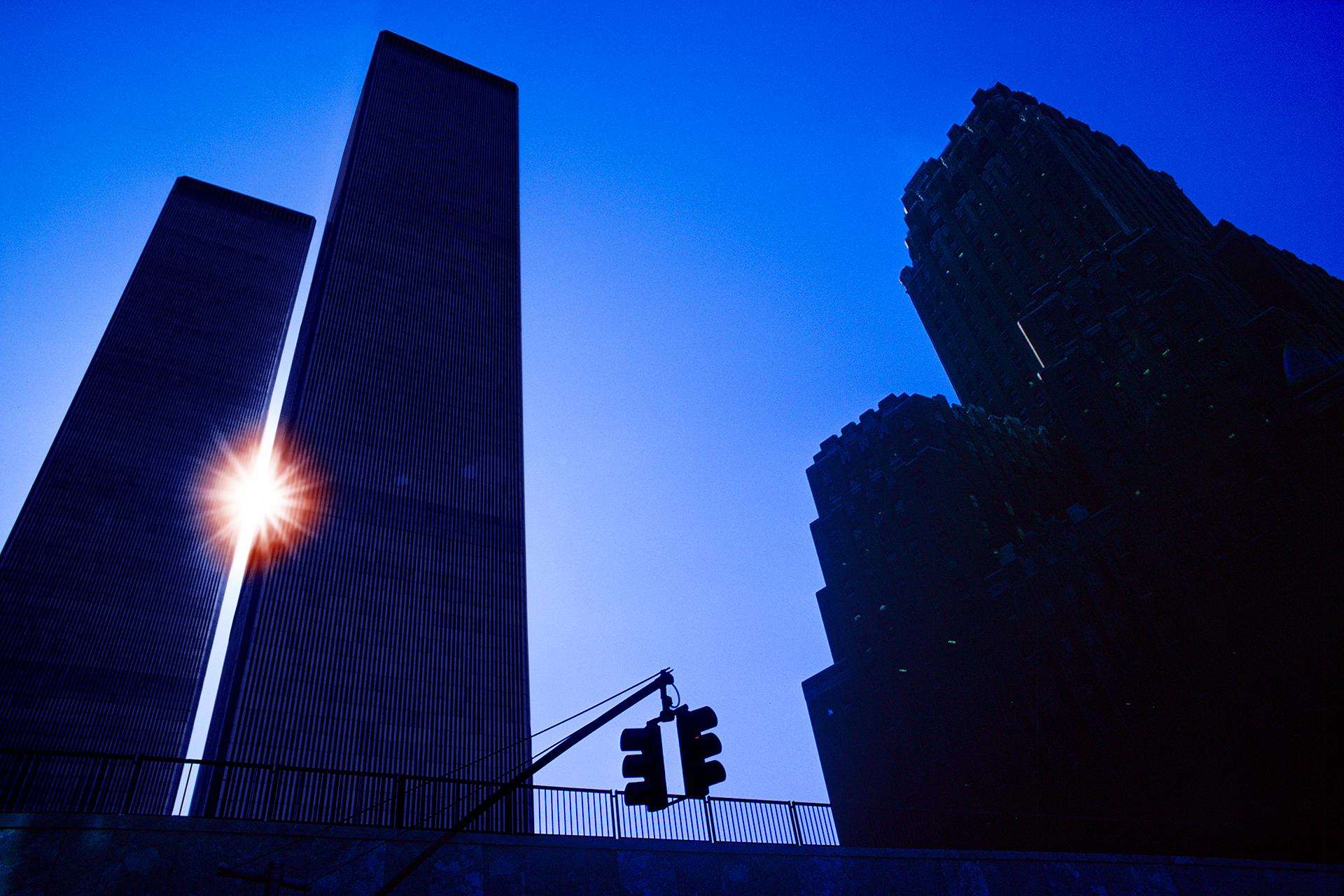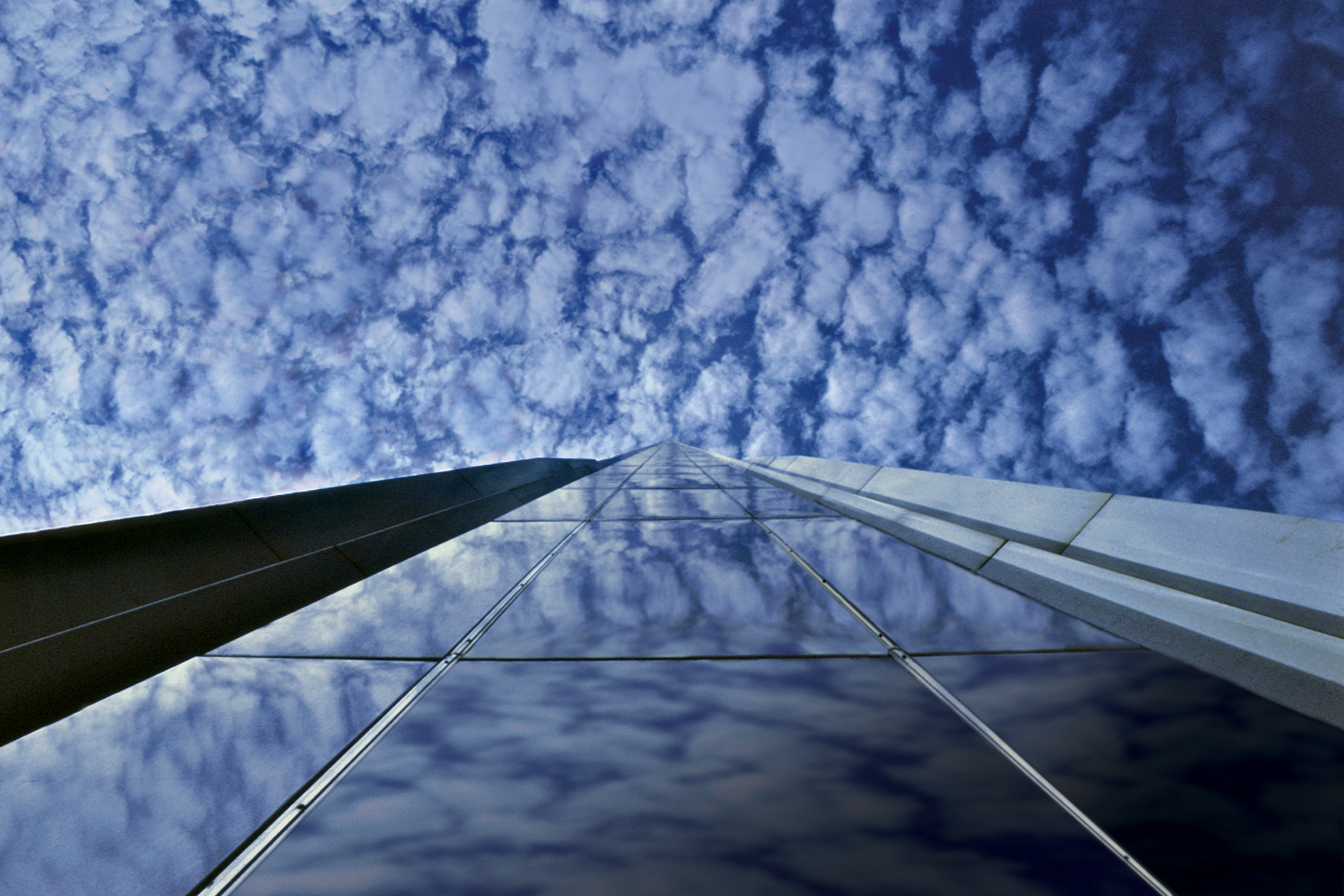
Manhattan has been compelled to expand skyward because of the absence of any other direction in which to grow. This, more than any other thing, is responsible for its majesty. It is to the nation what the white church spire is to the village, the visible symbol of aspiration and faith, the white plume saying that the way is up.
__
E.B. White
Here Is NewYork 1949
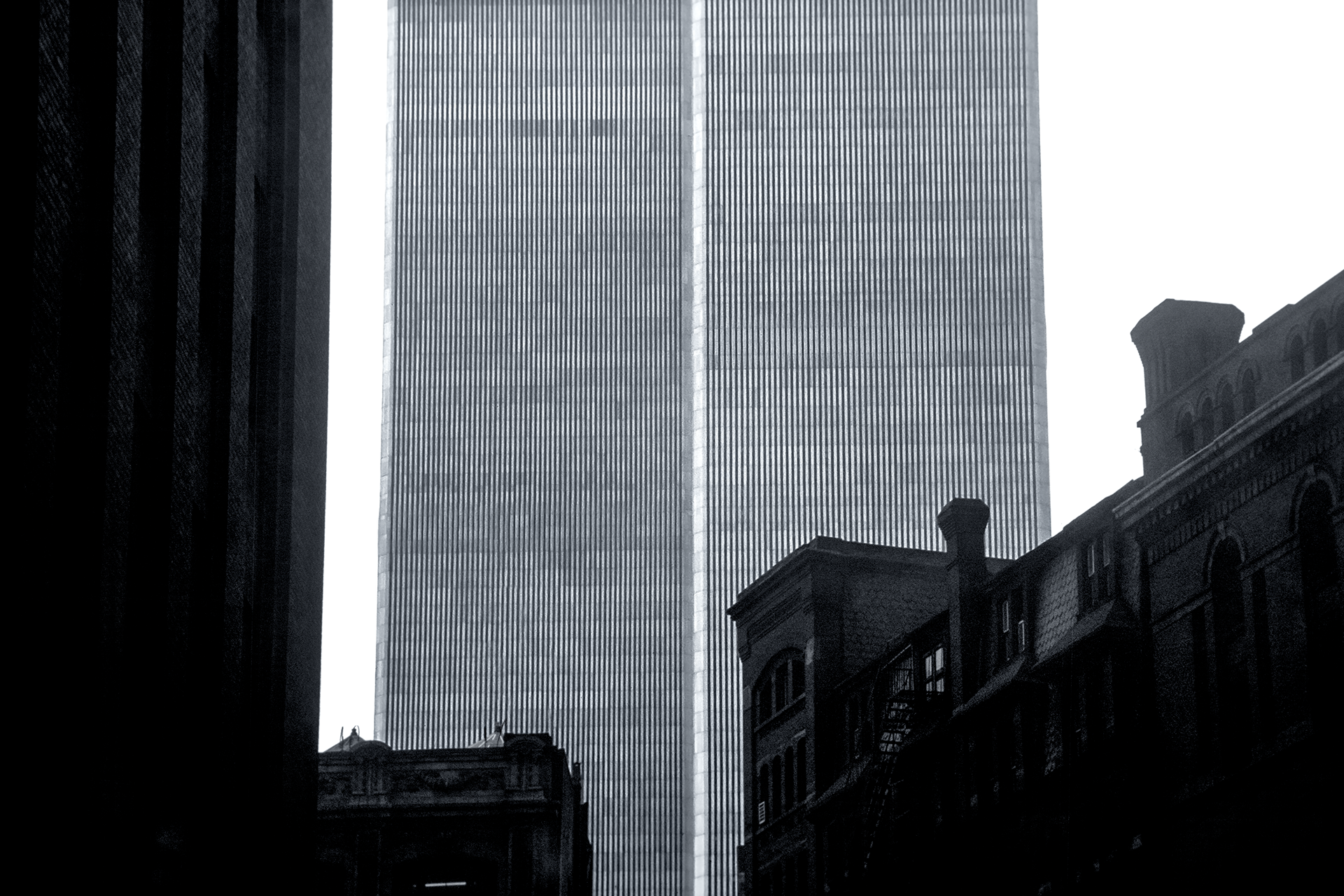
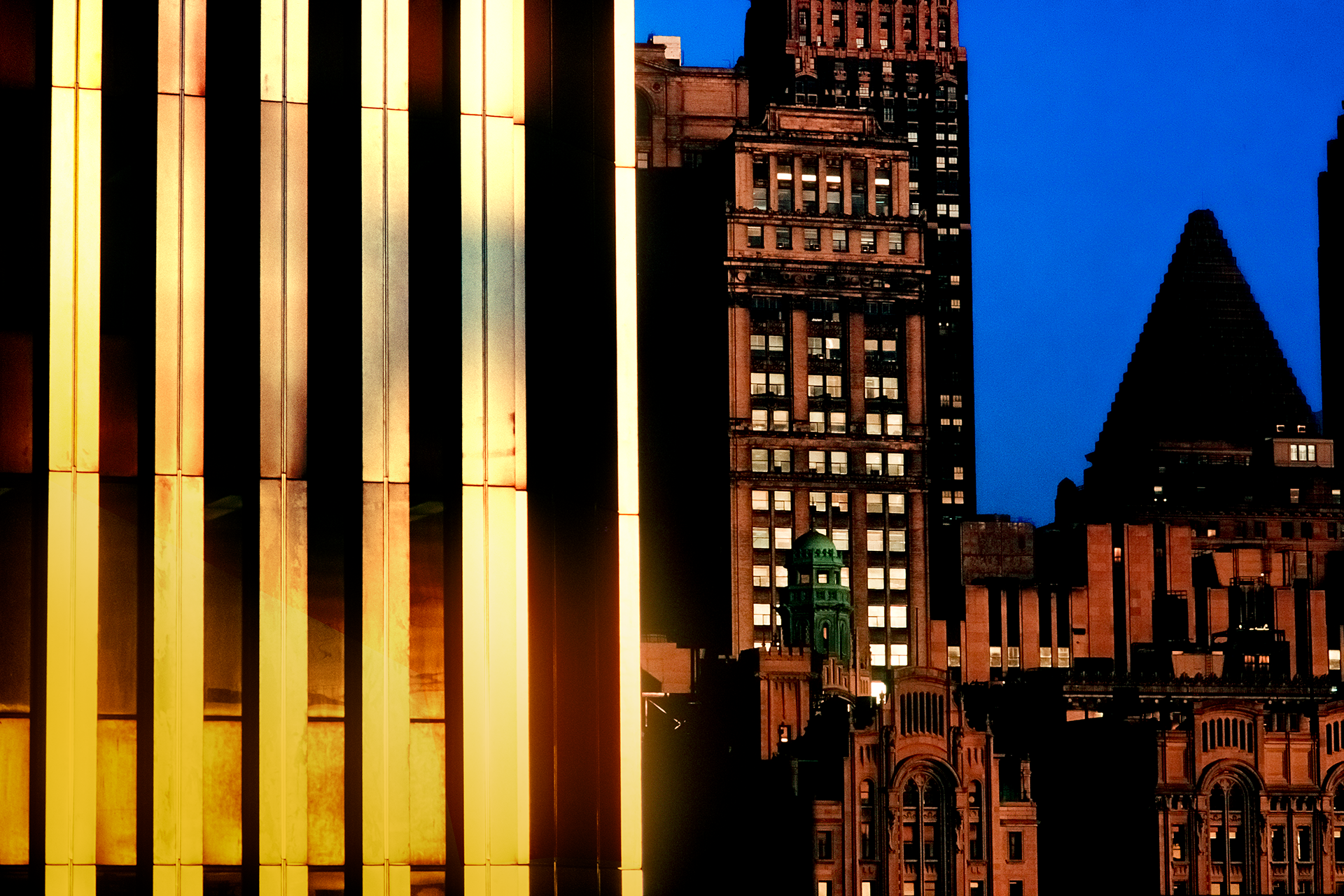
_
Ribbon 1975
One delightful characteristic of those beveled corners was that at certain times of the day (this was at sunset), the sunlight would catch them just so, and beautiful ribbons of color ran from the top to the bottom. The same effect happened on the= east corners at sunrise, but I was especially enamored when the sun was coming from the west over in New Jersey. Those buildings were so huge and so massive, and yet there was this sliver of color, almost delicate. I’ve always thought that this design was part of the architect Minoru Yamasaki’s Japanese heritage, that he would have created this very elegant architectural detail to counter the magnitude of the towers.
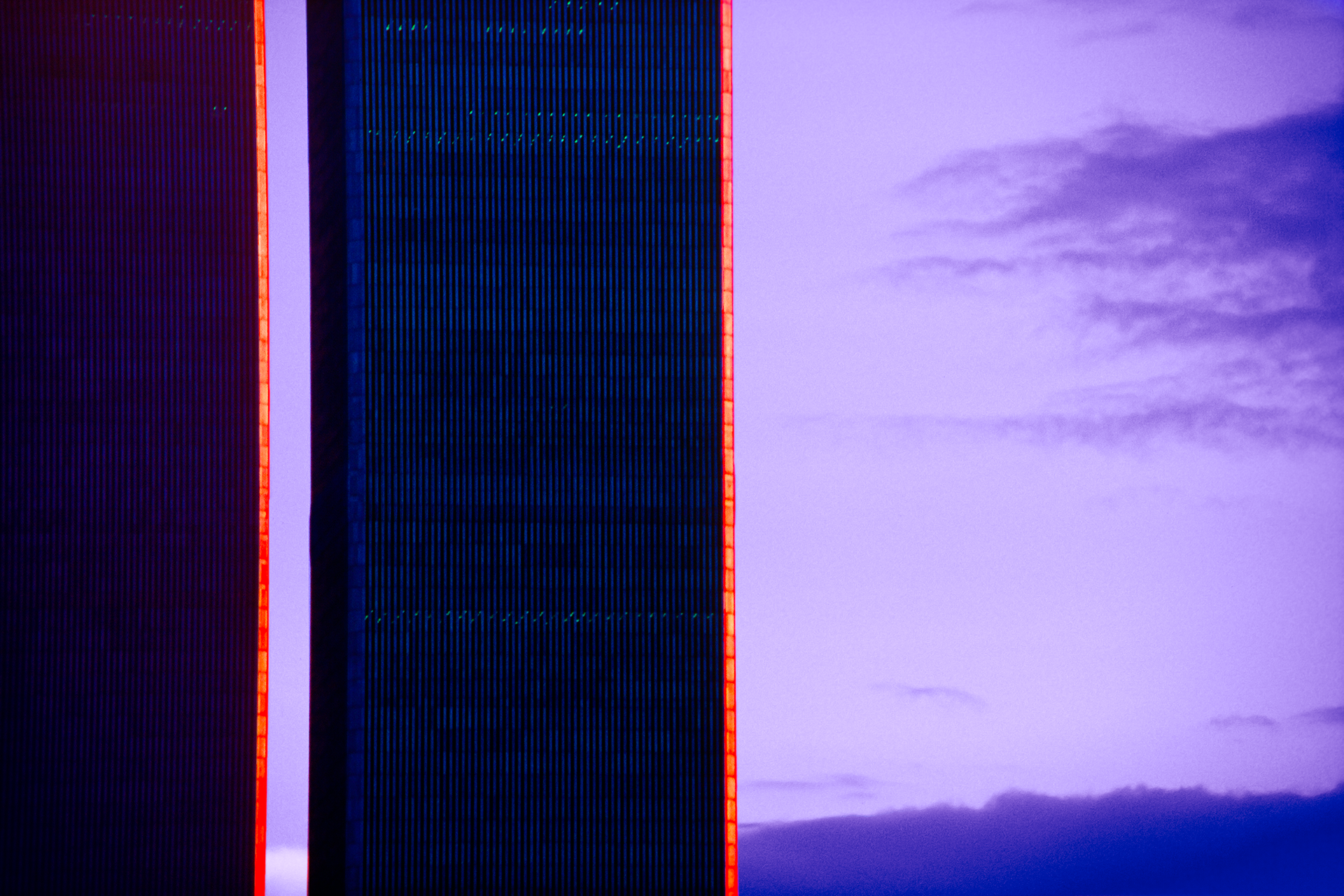
_
Trees 1976
This is the façade of one of the Towers. After they were destroyed some of these pieces have been saved and immortalized, referred to as tridents. But to Yamasaki, the architect, they symbolized trees. Here are the trunks branching out as they grow up. From both interpretations they have a beautiful, graphic presence.

_
Soaring 1976
This is one of my favorite photographs. When I stood in the plaza between the Twin Towers and looked up, I was pulled right into the sky. They soared and their soaring was dizzying! It was so exhilarating and an incongruity with what the condition of the city appeared to be at that time.

_
Rosati I 1976
James Rosati’s commissioned sculpture, “Ideogram,” was installed in the Plaza between the Twin Towers. Its form, presence and relationship with the buildings inspired the following photograph. That’s the Vista International Hotel in the background.
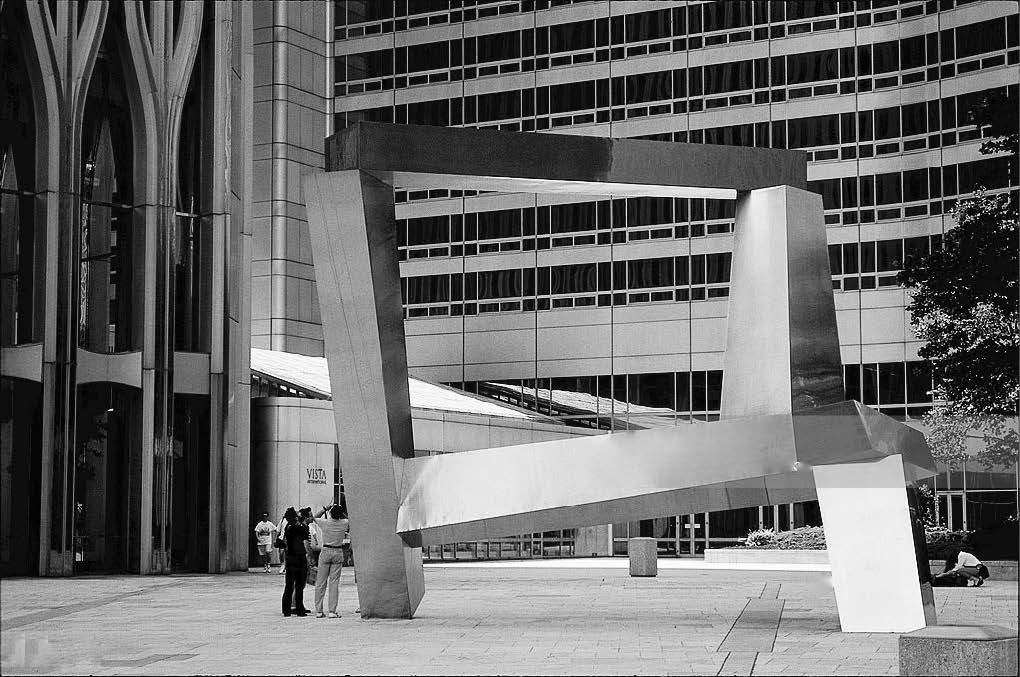
_
Rosati II 1976
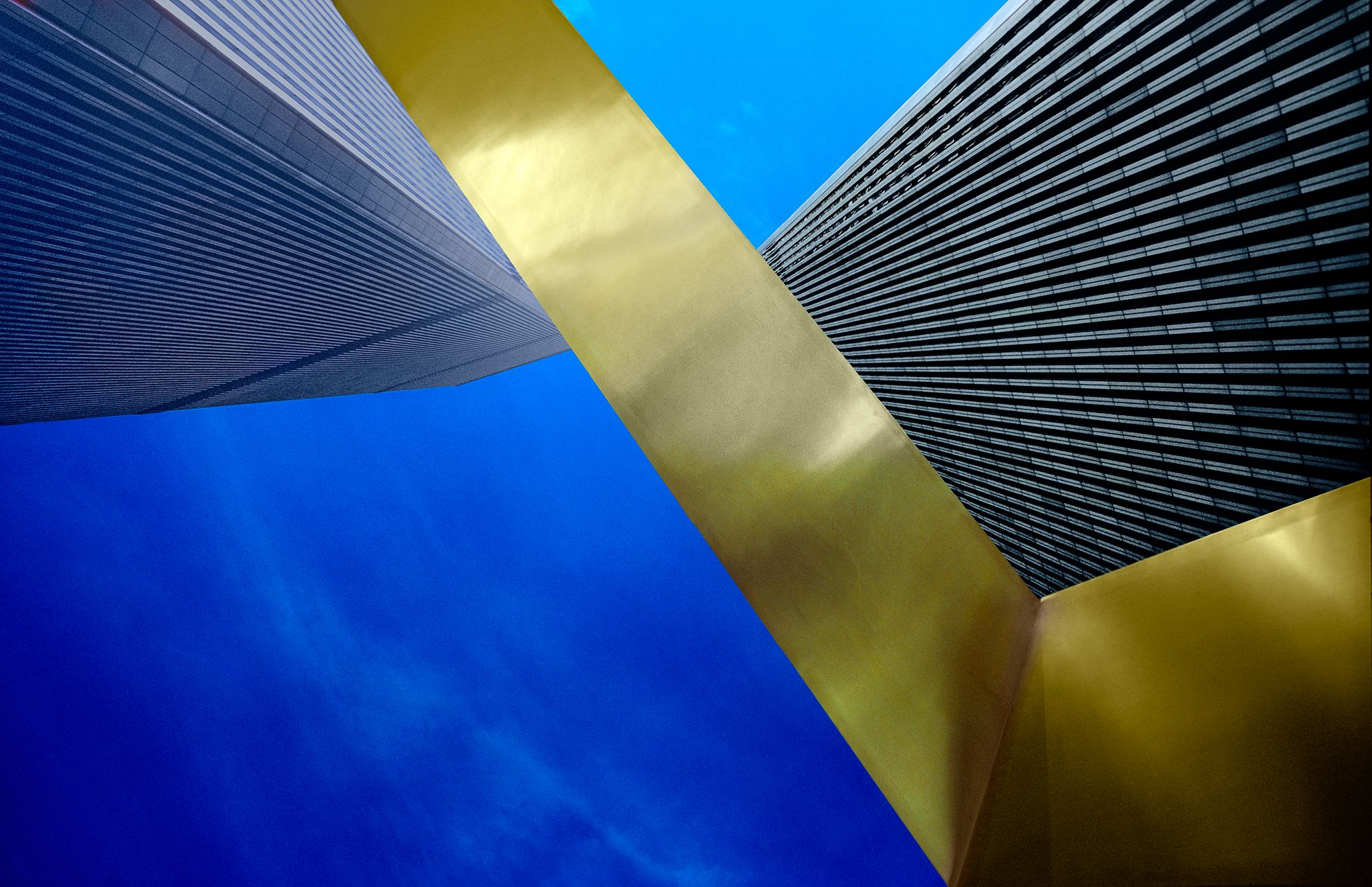
_
Flask 1976
In a different take, the background negative space became the foreground image. I called it “Flask.” The sky took that shape with its gradated blue color. The photograph includes the South Tower, two nearby buildings and part of a stairwell.
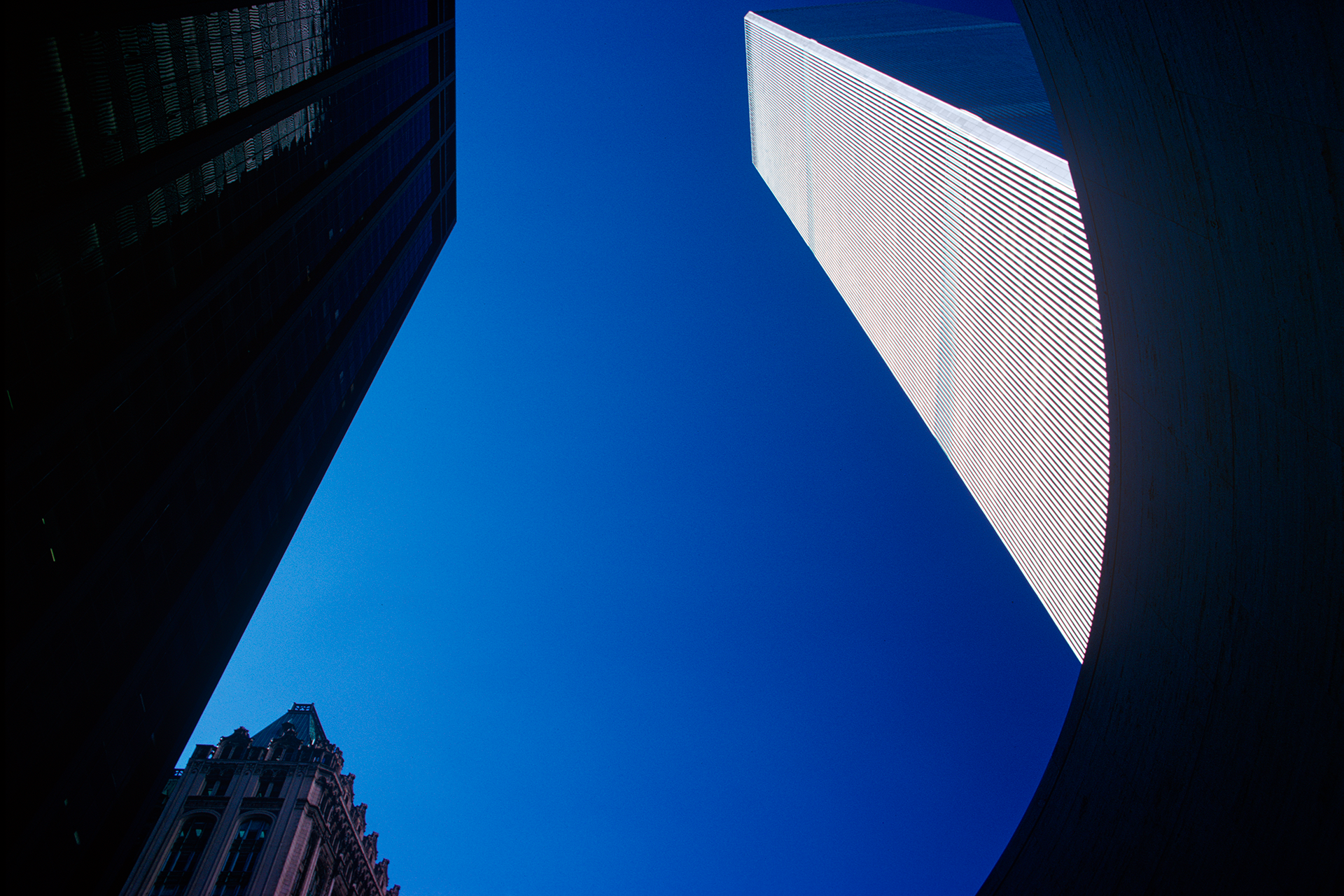
_
Reflection 1976
This graphic pattern playing in the reflection of the South Tower on the Deutsche Bank Building, at 130 Liberty Street, is another favorite.
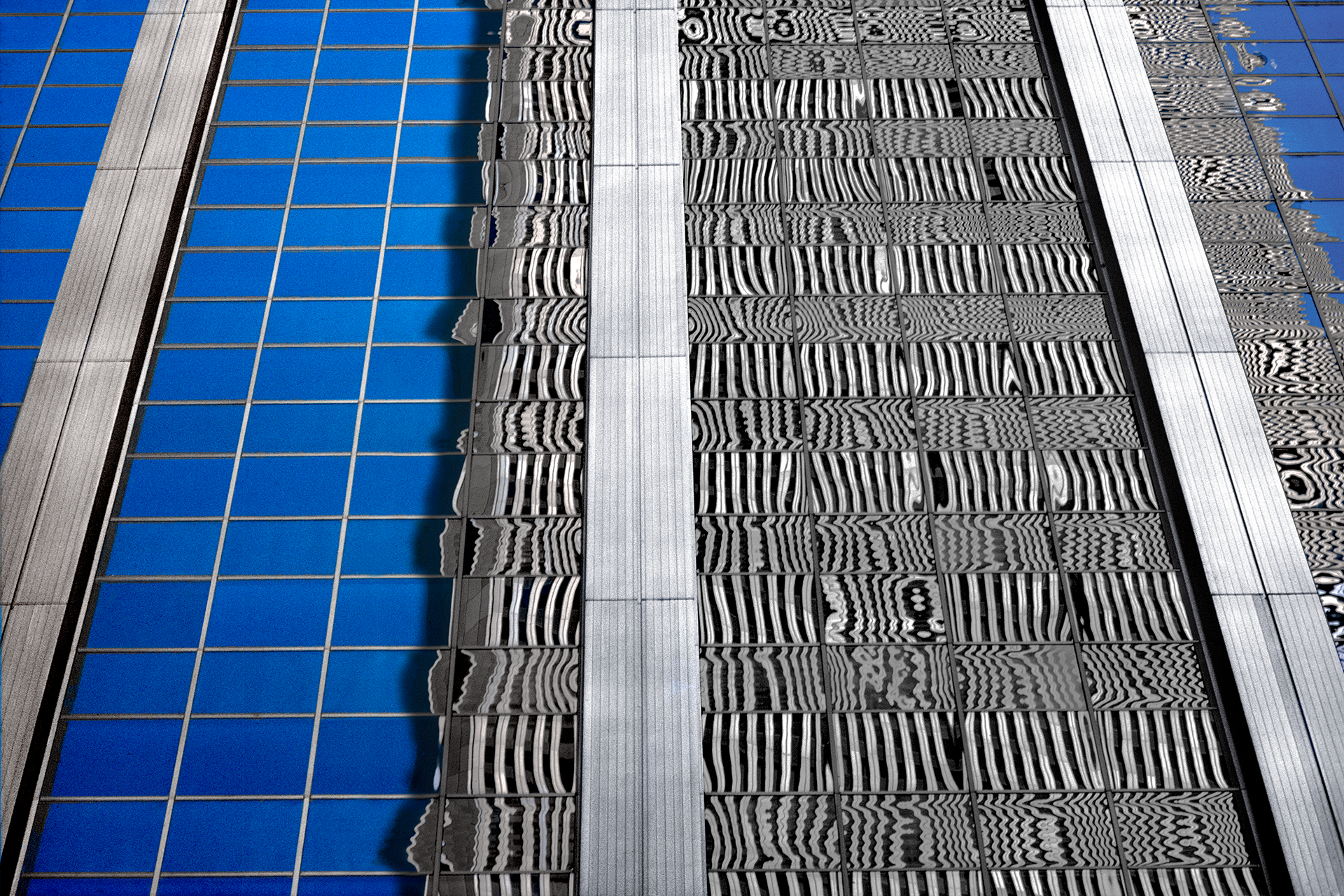
_
Sacred & Profane 1978
I named this photograph ‘The Sacred and the Profane’ in the classical sense, which doesn’t mean good and bad, but private and public. Here is Trinity Church (private), silhouetted with just the top of the steeple catching a little bit of sun, and the South Tower (public) in the background.
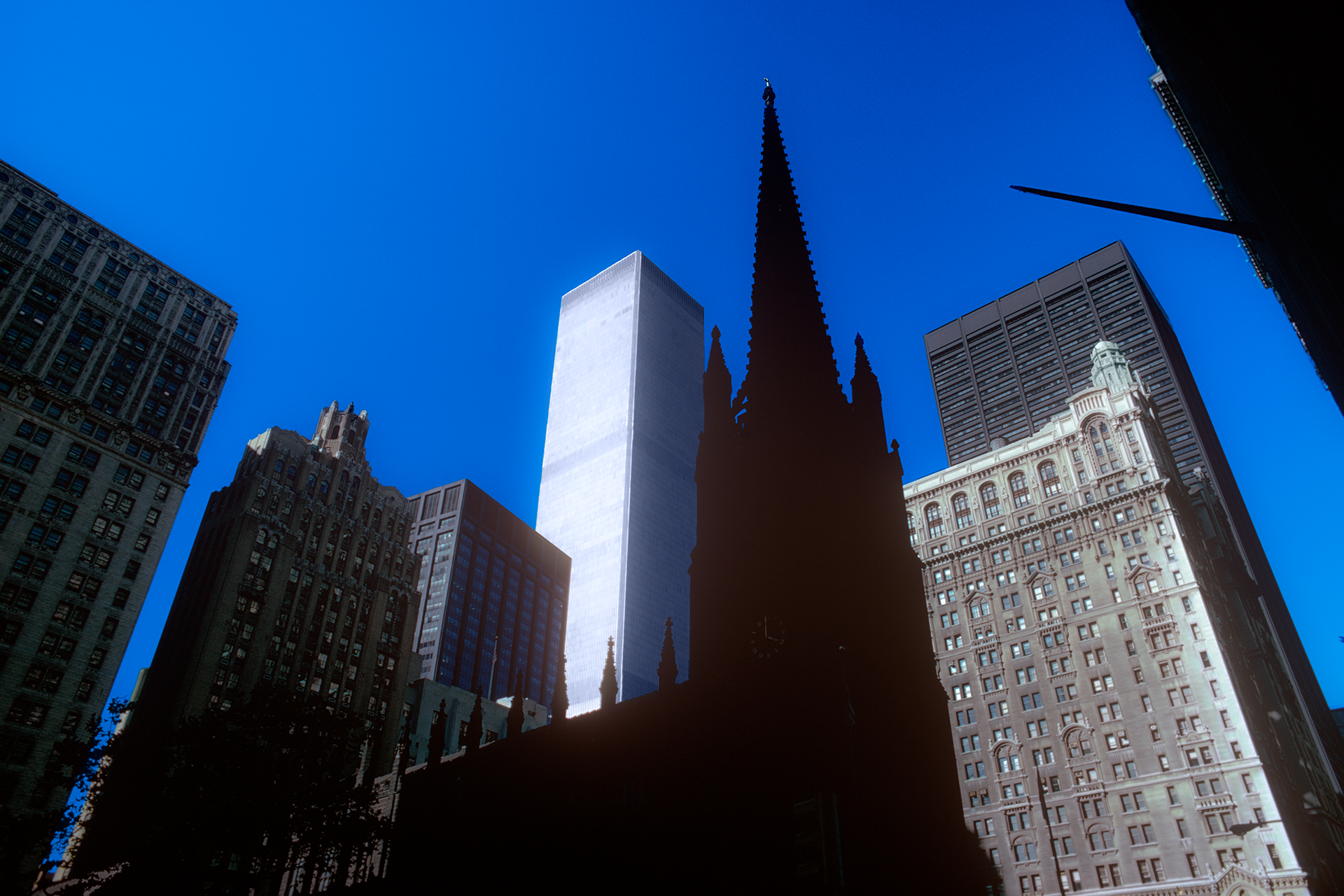
_
The Beach 1976
When the Twin Tower foundations were being excavated, they had to put all that dirt somewhere, so they placed it in the Hudson River, creating a couple of large landfills. One of these 90-acre dunes of earth across from the West Side Highway, eventually became Battery Park City.

_
The Harbor 1980
One lucky day the universe conspired for my advantage and I composed and captured this image coming into LaGuardia Airport, late afternoon, with a perfect combination of elements: dramatic clouds, the sun behind them, sunlight reflected on the water, Lower Manhattan silhouetted, and those towers. The Twin Towers, take them away and you don’t really know which world city you’re viewing. But there they are, and it’s obvious how they came to define the New York skyline as well as what America represented.
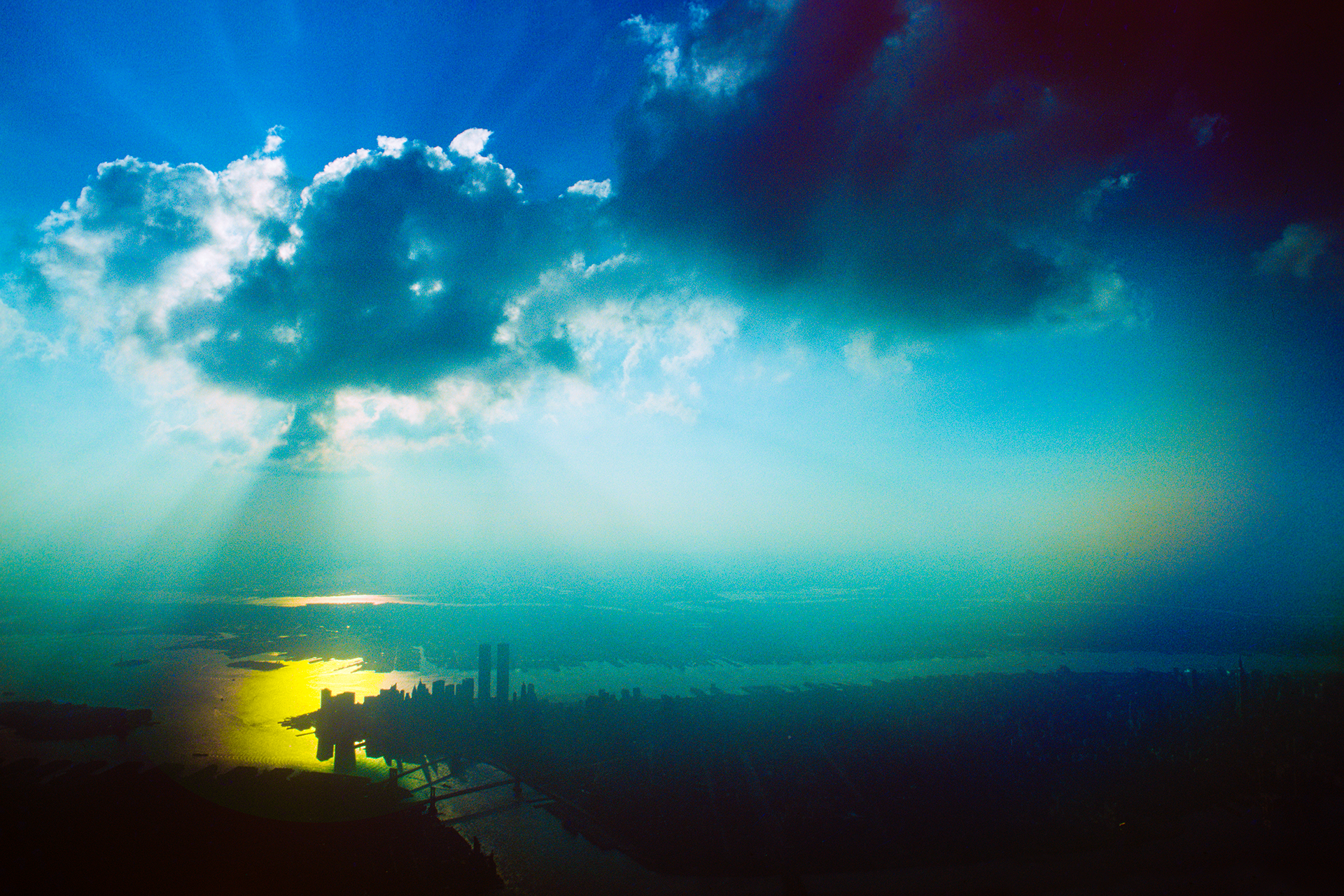
_
Twilight 1984
This photograph of Lower Manhattan in the early evening illustrates the power and the impact that the Twin Towers had in defining the New York skyline.
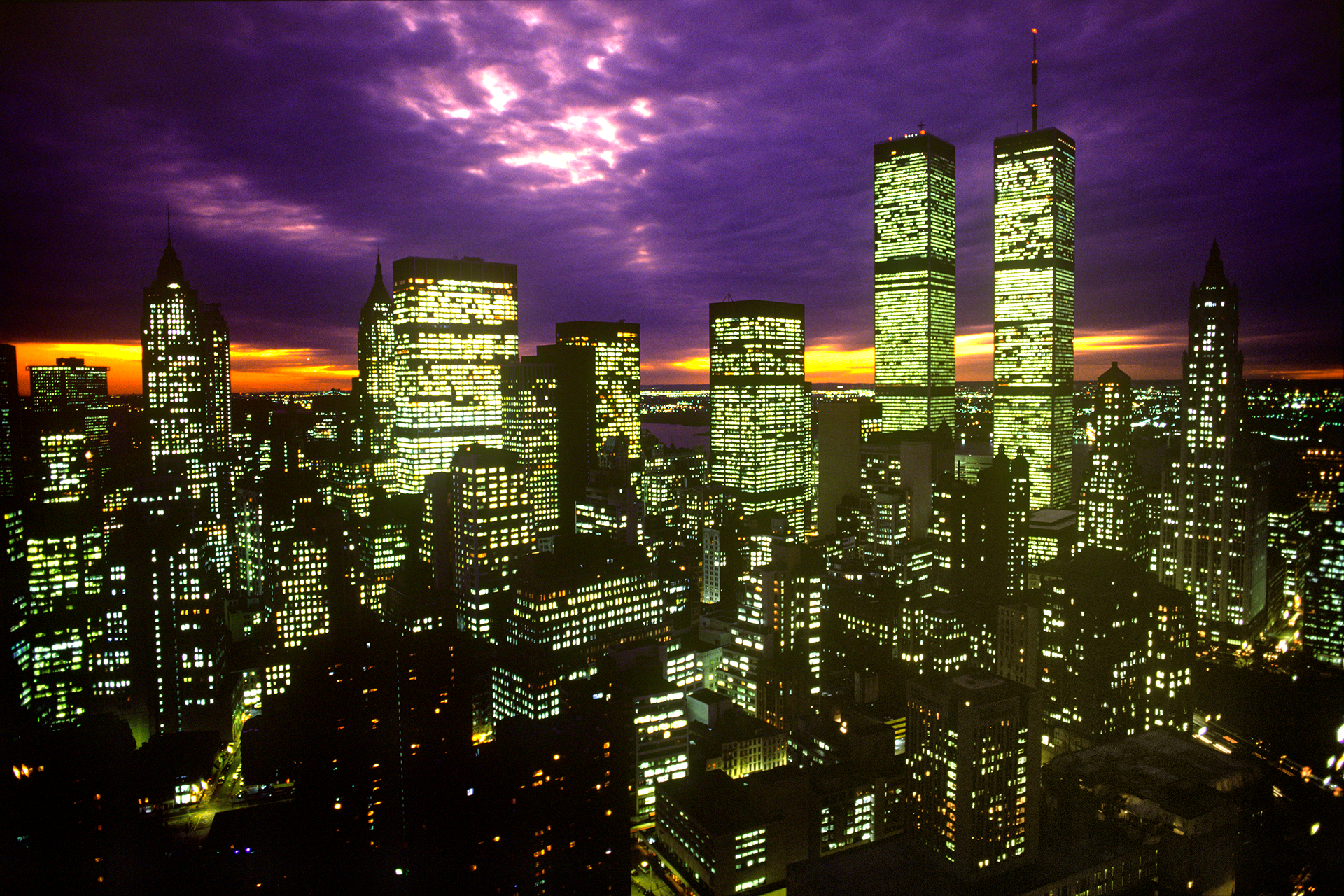
_
Empire 1981
I photographed this image from the window washing rig. The Empire State Building had been, almost forever, the symbolic icon of the New York skyline. When the Twin Towers were completed there was a definite competition between the outspoken champions of the two.
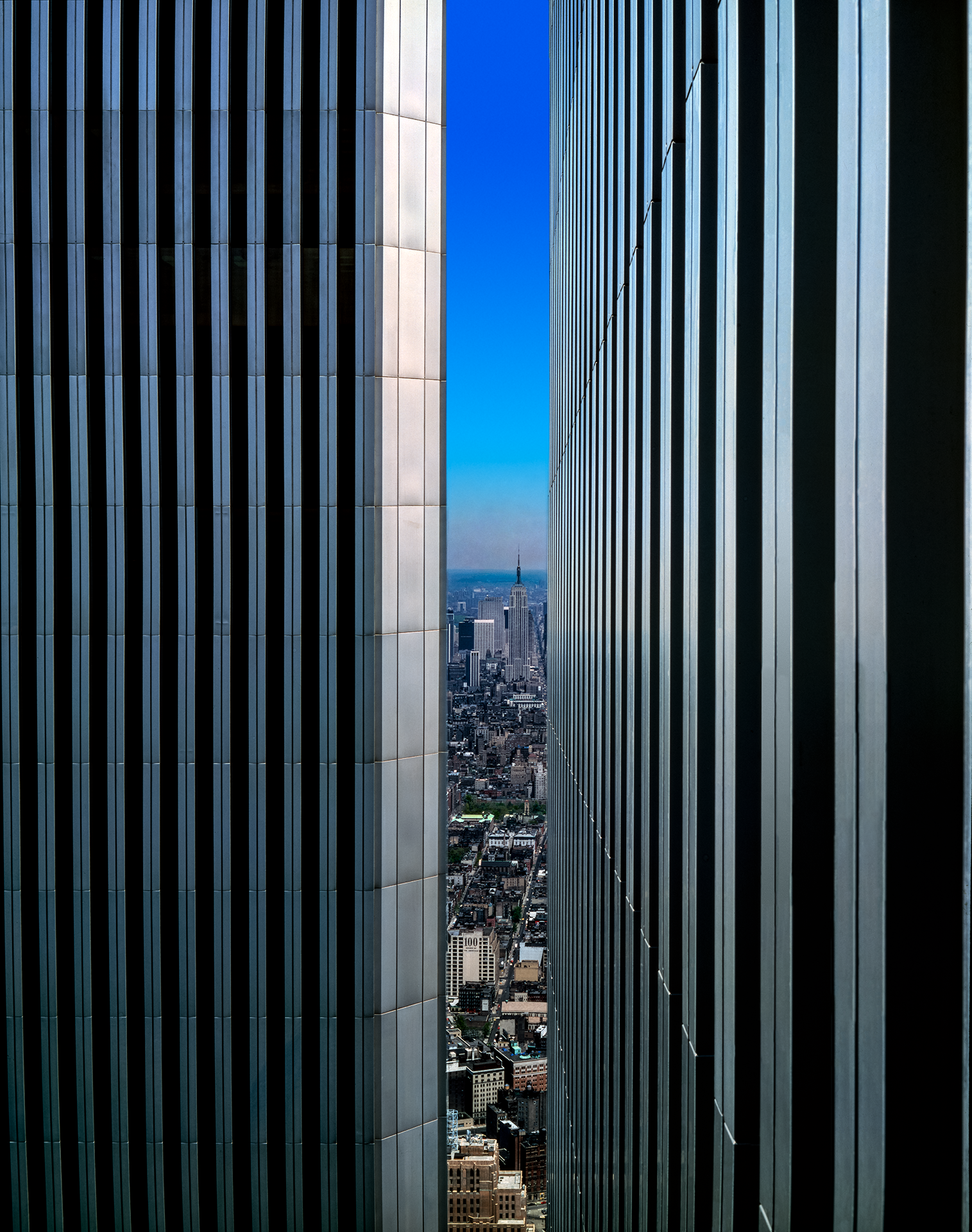
_
Moon 1981
I first fell in love with the Twin Towers when visiting their site at night, and I wanted one of the murals to convey that mysterious nocturnal feeling. There’s also something mystical about a full moon so I incorporated it with one of the monolithic towers photographed “day for night.”
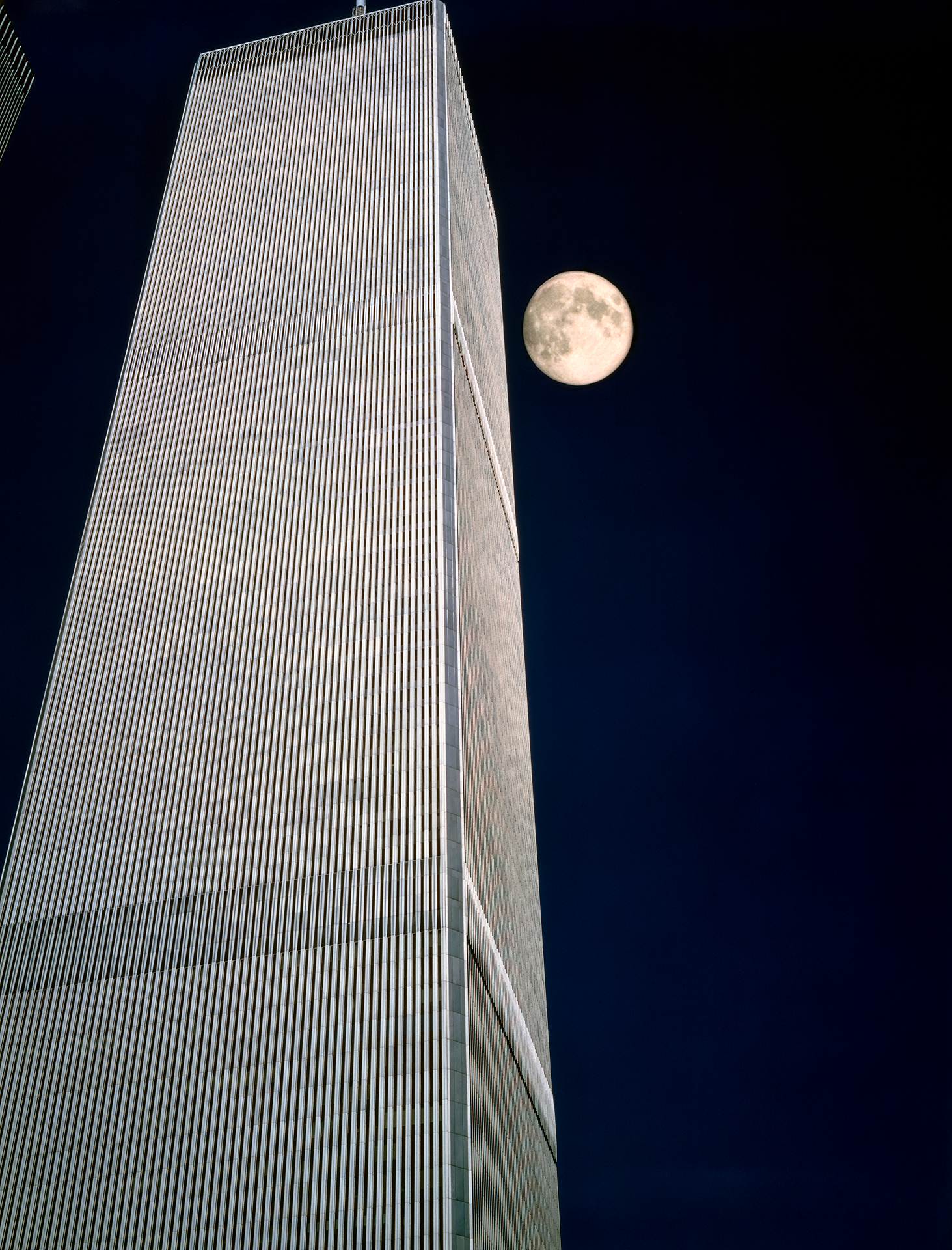
_
Bevel 1981
The beveled corners were a signature architectural consideration of the Twin Towers. They are brought into play here, juxtaposing one with the other, and like the buildings themselves, soaring into the sky.

_
Infinity 1981
The footprint of each tower was one acre, huge, and their façade was so expansive and uniform. When you walked close and looked across and up they seemed to go on forever, into infinity.
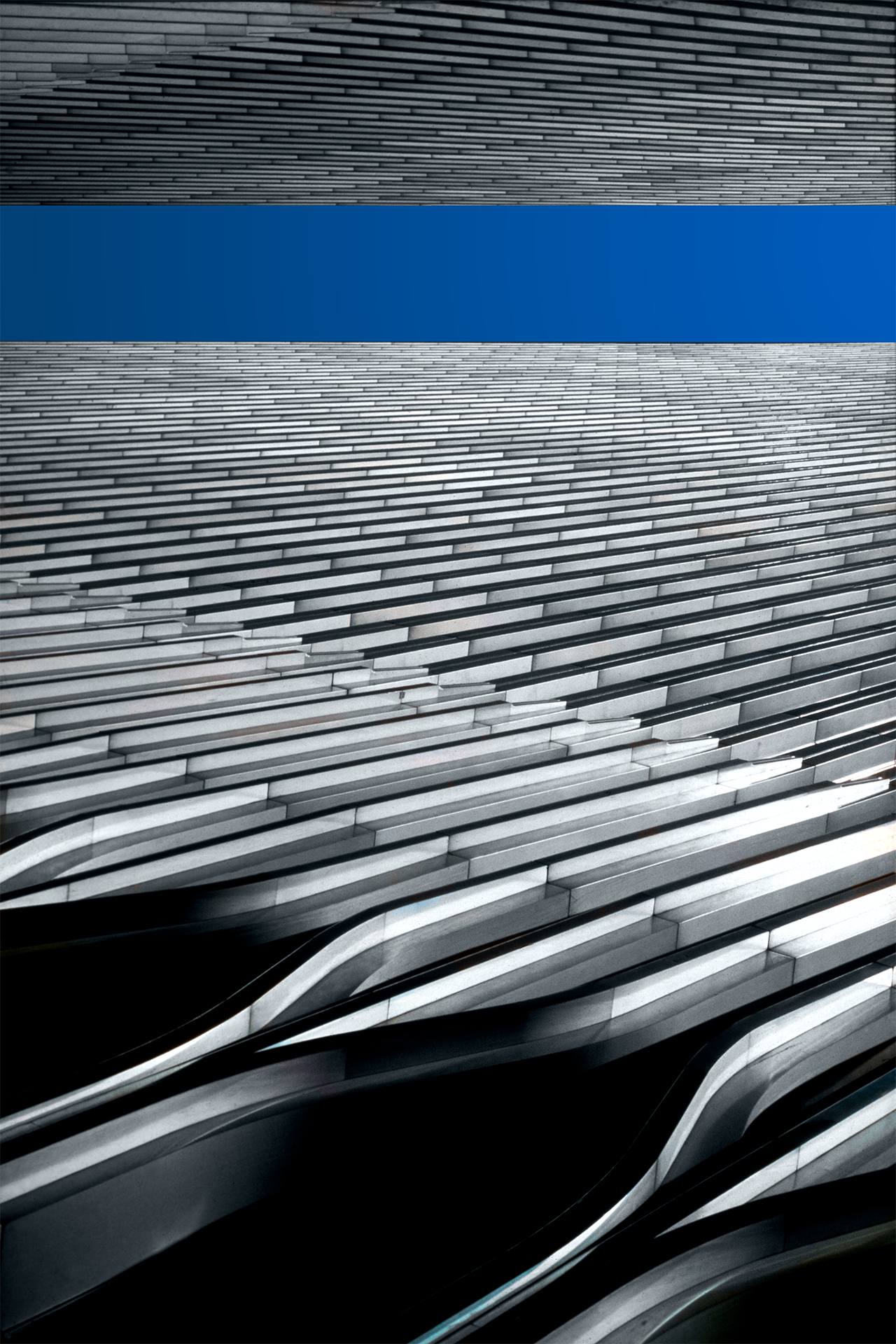
_
Liberty 1981
Also shot from the window washing rig was this final mural with its view looking from the towers into the harbor with the Statue of Liberty.
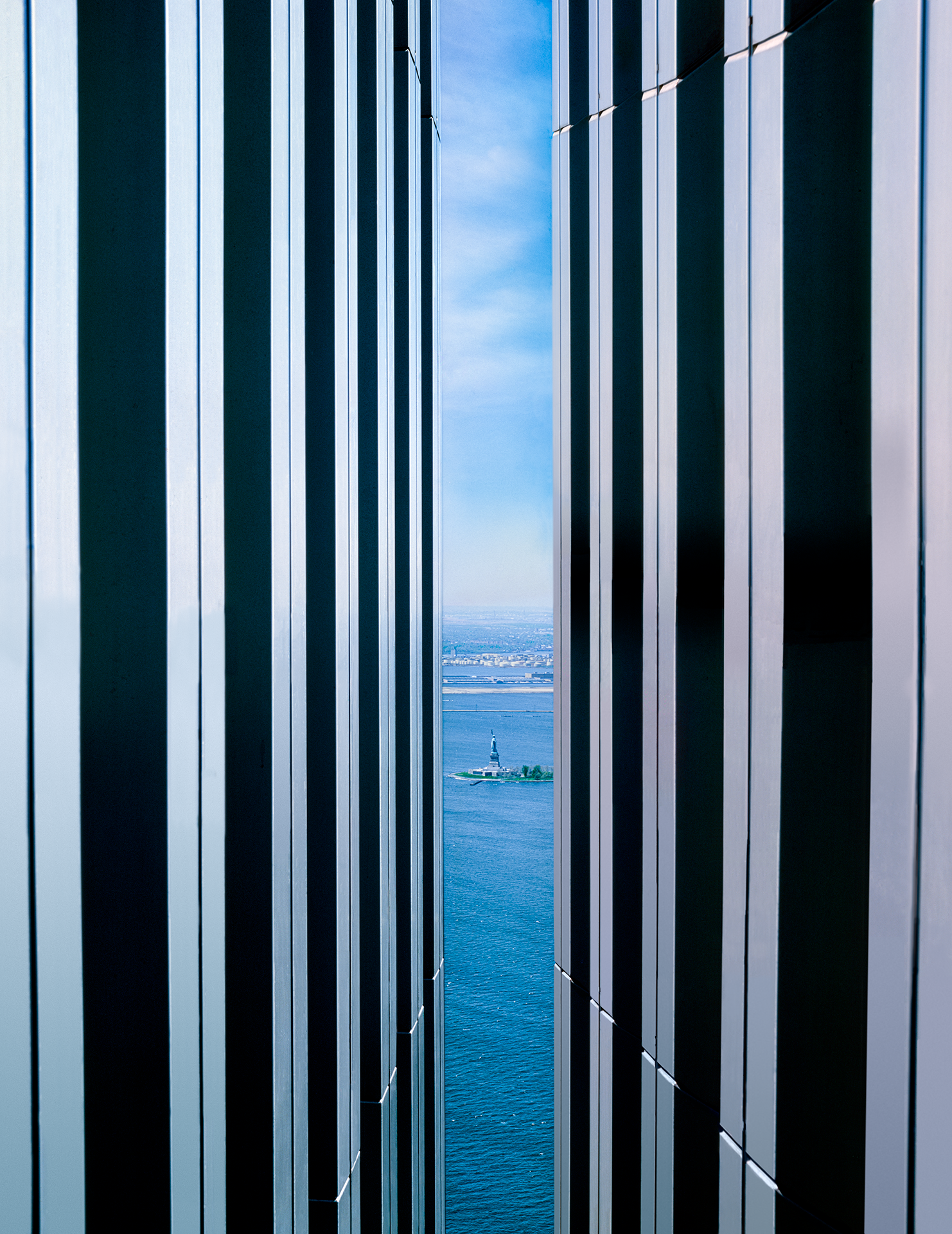
Get the complete selection of photographs and more in the forthcoming book by Charles Hugh Moretz, Jr., on ORO Editions.
